In 2002, Canadian photographer Christopher Herwig went on a series of bike trips that took him 12 years and across 30,000 kilometers of the former Soviet Union. Too often, when talking about this part of the world, we look to political cornerstones as reference points. The Cold War, the Red Scare, the Iron Curtain, the Thaw… Sometimes, it feels like the most creative thing about the USSR was the Western media’s jargon-filled rhetoric.
But we often forget… Where there is political tension, reactions from the creative community are never too far behind. In this case, it just took a photographer’s eye to connect the dots.
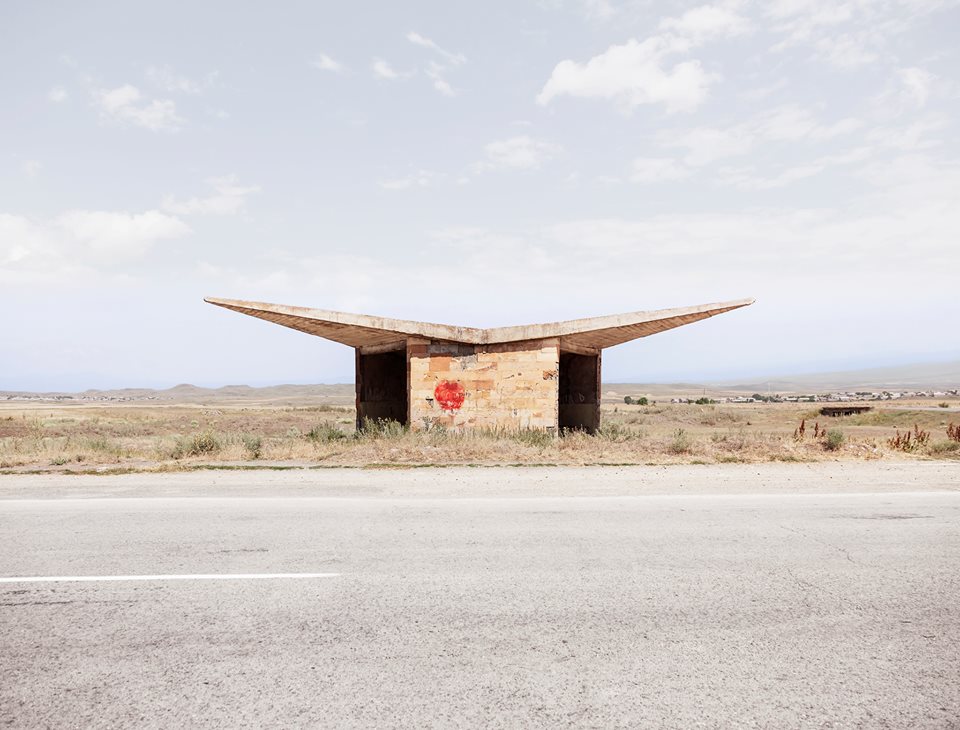
This image of a bus stop in Saratak, Armenia amidst a barren landscape, dons the cover to the new book, Soviet Bus Stops. By Christopher Herwig
Herwig’s decade-long excursion saw him curate some of the most stunning examples of Soviet architecture in places no one would have suspected — local bus stops. We recently spoke with Herwig to try and understand the appeal of his project from his perspective and how it might be representative of a larger trend where photographers are traveling to neglected areas and re-evaluating the aesthetic value of these unlikely mascots of Soviet modernist architecture and creativity.
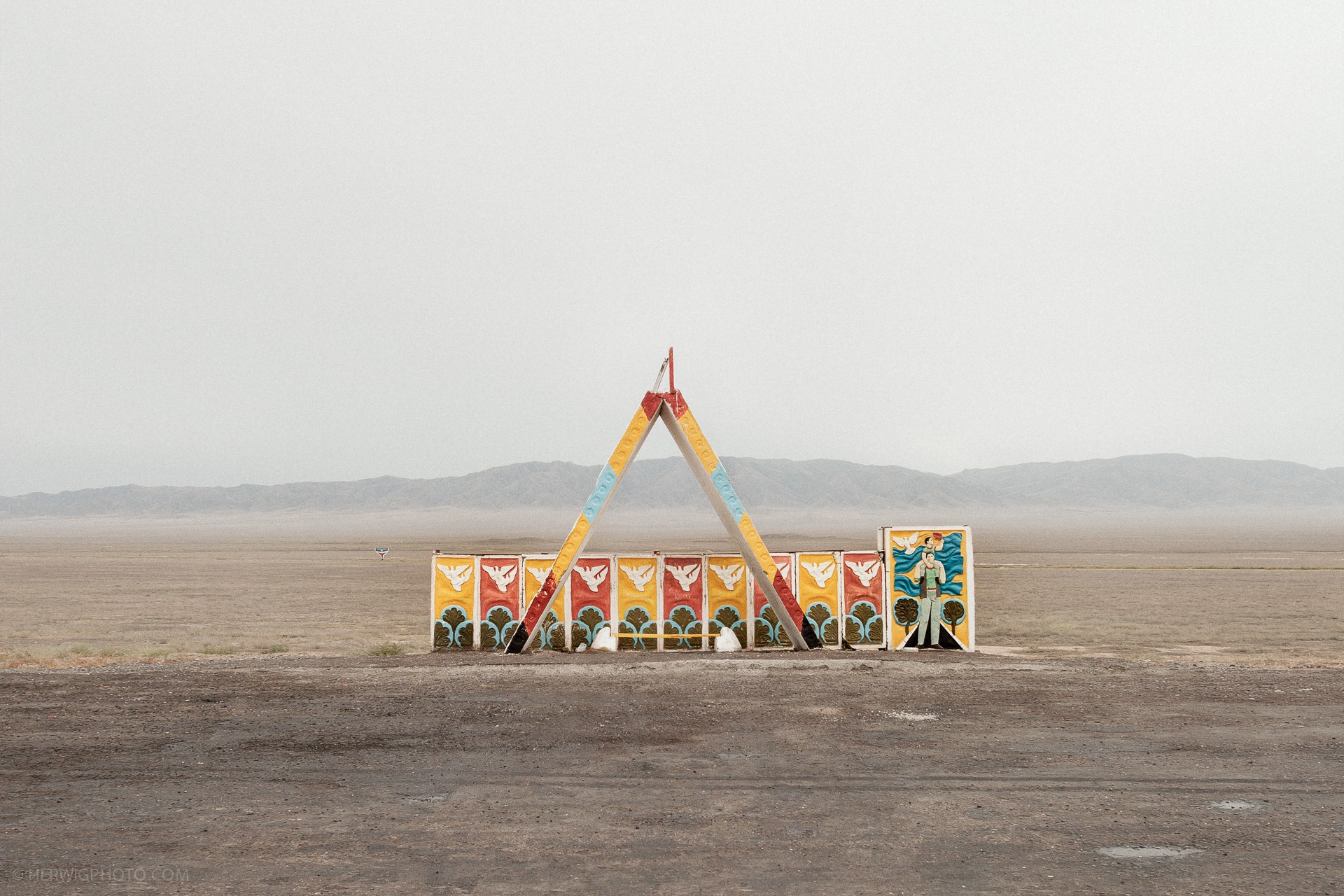
Charyn, Kazakhstan. By Christopher Herwig
You came up with the idea to photograph Soviet bus stops while riding your bike across Europe to St. Petersburg 12 years ago. Can you explain in greater detail how that idea came to fruition?
I was kind of playing a game with myself while I was riding my bike where I had to photograph something every hour. I wanted to force myself to take pictures, because I had taken trips before and I often found that I was just waiting for some kind of ideal National Geographic moment… I was trying to look for beauty in anything, or in everything, just more common things, as opposed to just the clichés that we always photograph. At first, it was quite difficult because everything did sort of look the same. But the more I came along, I developed sort of themes: people’s clothes lines, apartment blocs, things that had fallen on the ground, power lines, and I thought that there were ways of making them look beautiful still. Even though they were quite common and simple. I had photographed a couple of bus stops along the way in Europe. But when I got into what was the former Soviet Union, I started seeing these bus stops that were just… quite perfect for what I was doing… They’re a fairly common and simple thing, but they were very cool.
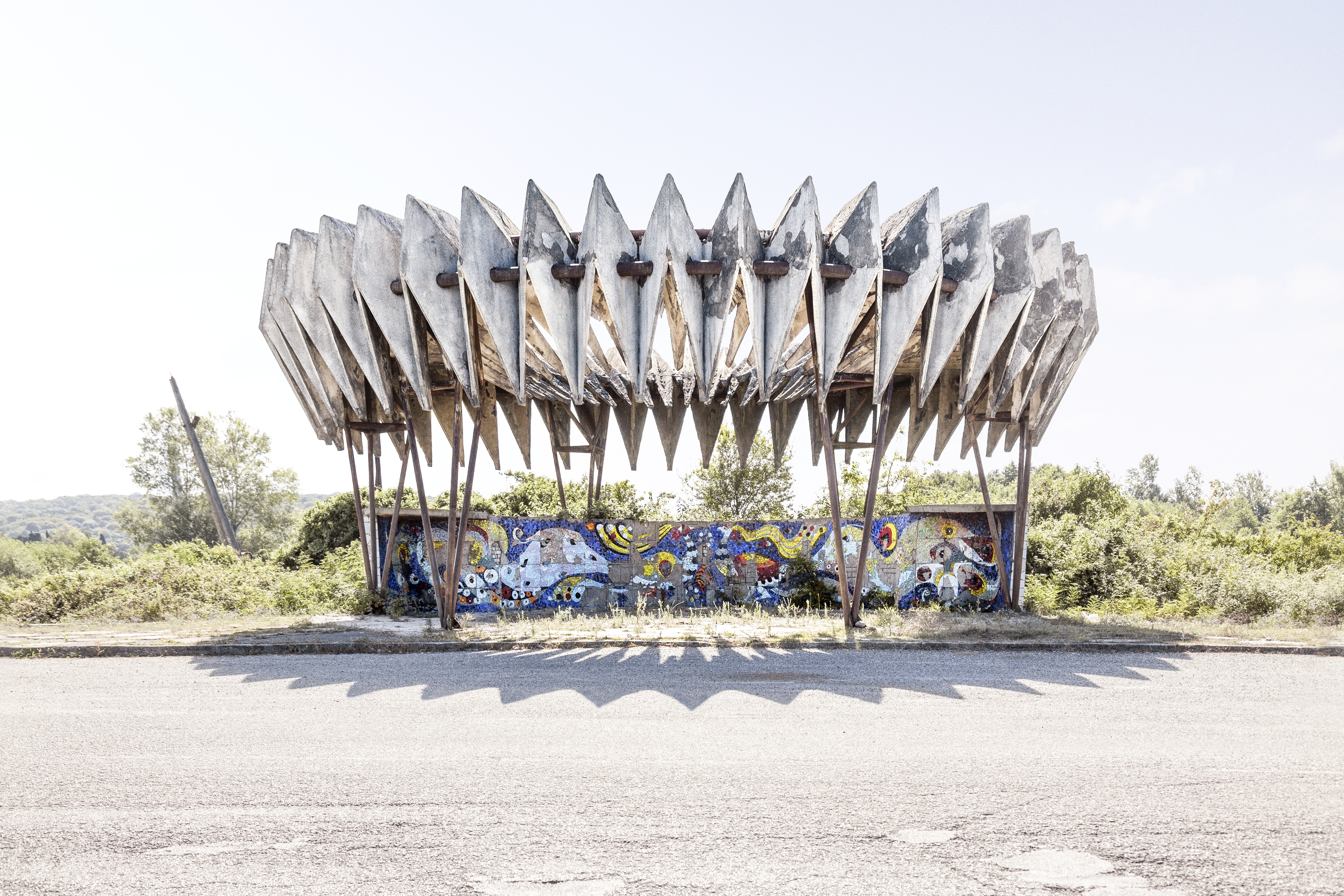
Pitsunda, Abkhazia. By Christopher Herwig
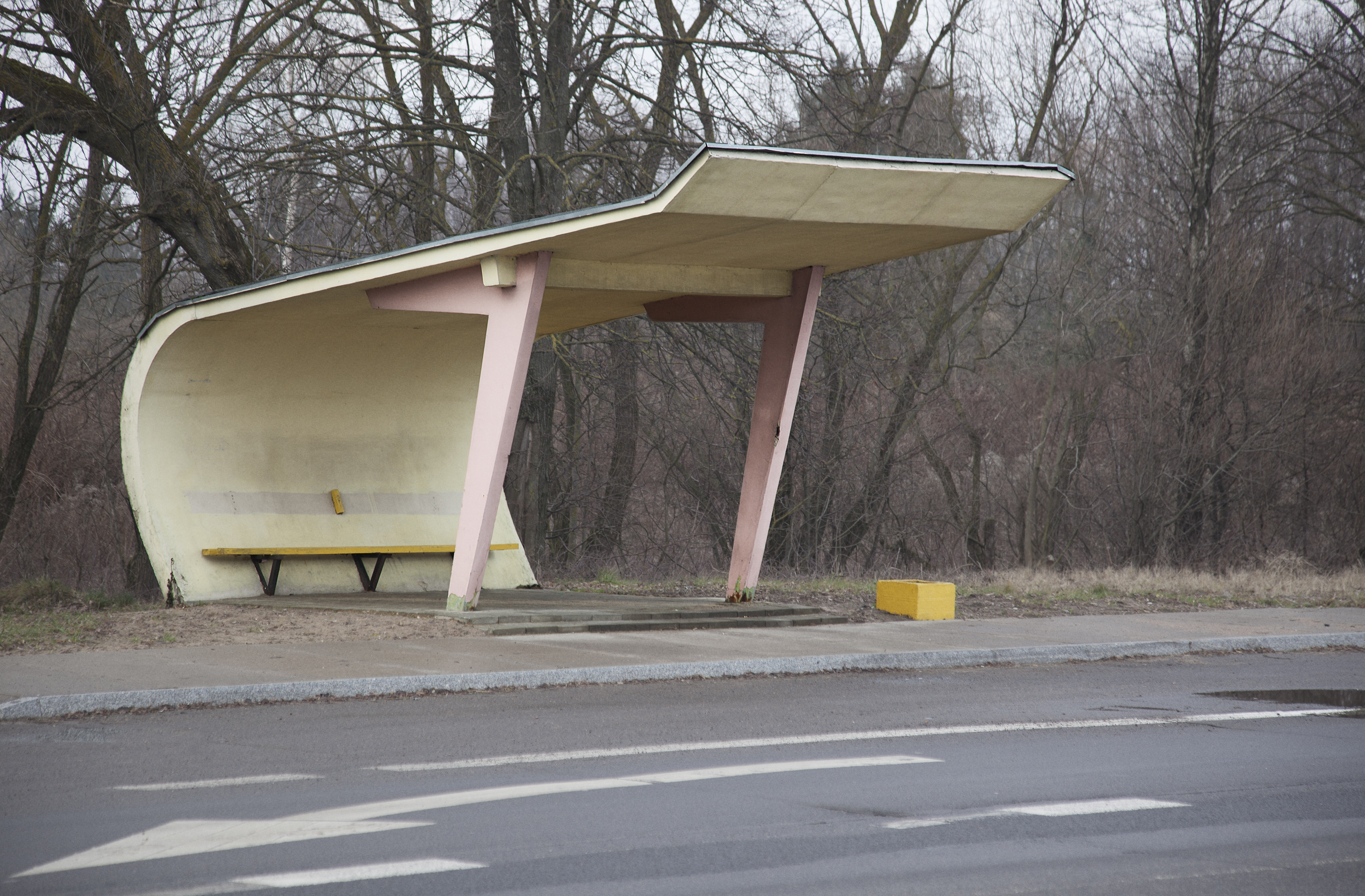
Kaunas, Lithuania. By Christopher Herwig
When did you start to receive support for the project?
It was only after I did the Kickstarter campaign, to see if I could get grassroots support for it, that publishers started approaching me to take on the project. But when I was asking people to do it, nobody was interested. It’s a weird case. I think people like to see that something’s popular, or that they discovered something themselves and they don’t like it to be sold to them, I guess. But over the last couple of years, the support and attention for the project has been really overwhelming. I couldn’t have imagined it would be so popular and over such a wide variety of genres. We had fashion magazines, websites like Foreign Policy and The Spectator. You had, like, Vice and Wired to much more conservative and politically-oriented articles and arts magazines and history magazines and architecture magazines and of course the BBC and CNN and Russia Today. So, quite a variety of interest. I think it just somehow captured people’s imaginations. Something they didn’t know about or they didn’t expect.
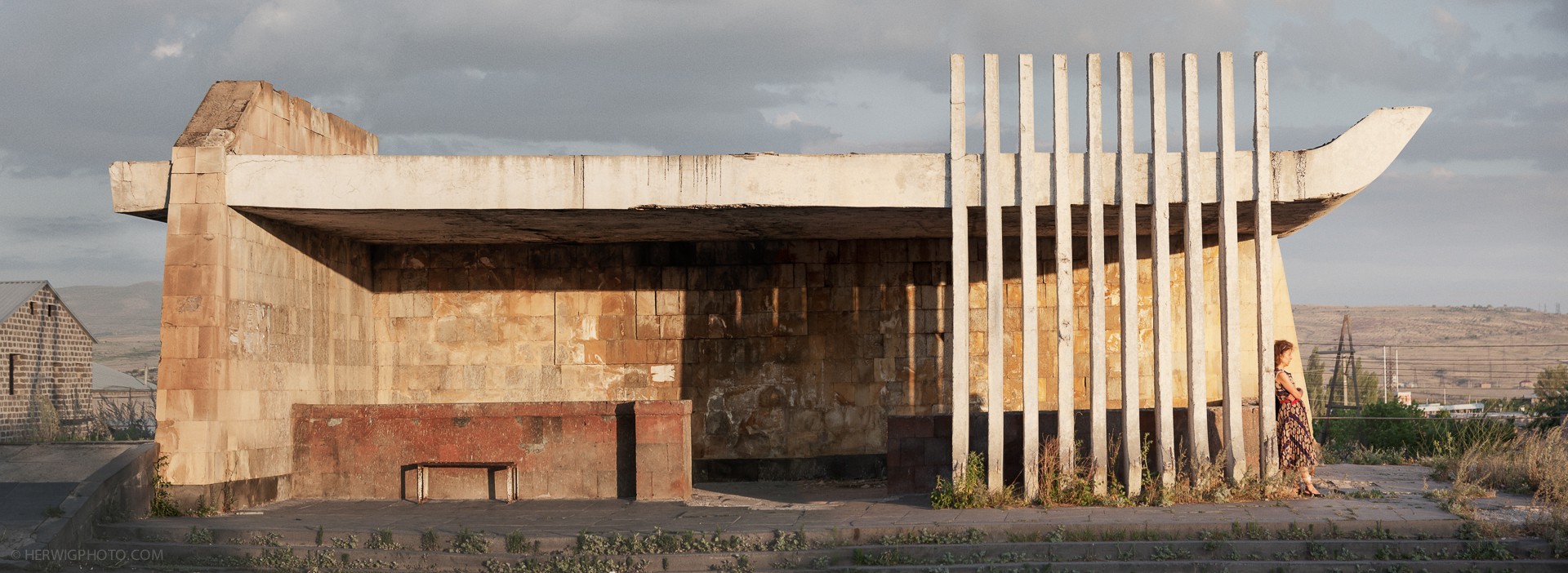
Yerevan, Armenia. By Christopher Herwig
When I first saw your project in Kickstarter, my first reaction was, “This is an awesome way of giving exposure to regions that don’t typically get it from Western media.” Growing up in the United States, we’re somewhat shielded from learning about Soviet culture. We only really learn about the Soviet Union through the context of the Cold War and political interactions between the USSR and the US. It’s kind of a forbidden fruit for us, in a way, and I think this project does a really great job of highlighting an entire world that was nearly entirely bypassed in our art and history classes. Was that one of your intentions?
I think you really summed up what I was trying to get at, as well. Whenever you hear the word Soviet, there’s always a political connotation. And I was trying to create something that had no political component to it. I wanted people to look at history, not from a state level, but from an individual’s level, as well, so they can see who was living there and that they were also ordinary people. We can have our opinions about the state as a whole, but not only that, there was individuality in the Soviet Union, and a lot of nationalities. It was also kind of interesting for me that the bus stops were much more of a local project than a Soviet project.
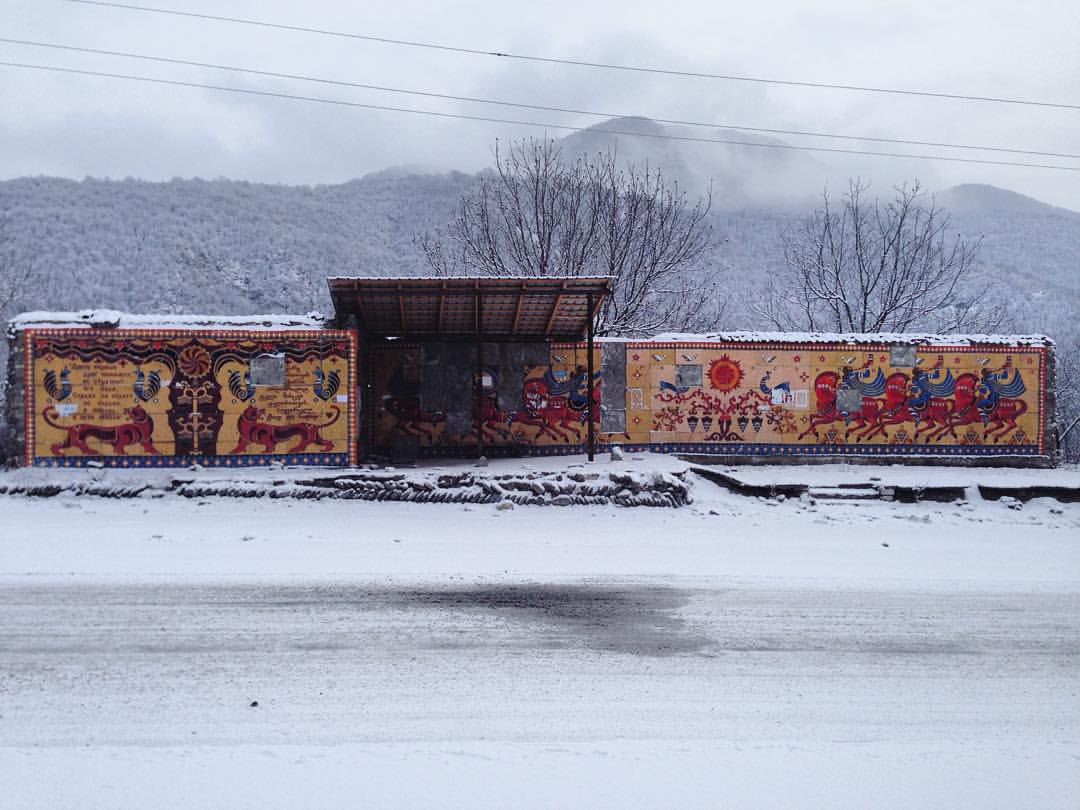
Inspired by Herwig’s project and currently stationed in the former Soviet Republic of Armenia, I am always on the lookout for bus stops wherever I can find them. Here is one I found on a recent trip to Georgia on the road from Tbilisi to Gudauri. By @karine_pa.
But it seems, at least from my experience photographing some of these Soviet bus stops, very ironically, that the local people that surround these bus stops don’t seem to appreciate them!
[Laughs] You know, I remember the first time I was in Kazakhstan. I had stopped to shoot a bus stop and a woman was like, “Why are you photographing? You’re just going to take it back to America and show everybody how dirty and weird our life is here.” I tried to convince her that I actually really thought that this bus stop was gorgeous and was the nicest thing that I had seen in a while and I’d been driving all day to find it! And the ironic thing about that bus stop, as well, was that someone had freshly painted it. So, it had been 10 years, and someone was still taking care of it. So, there must have been someone who had some pride in that bus stop. But I think that, for locals, they’ll see that one bus stop. They don’t see the whole scope of all the Soviet bus stops and the variety and the charm of it, that’s just part of their landscape. That one bus stop. They probably just see, oh the seats are broken. Someone has taken a poo behind the bus stop. There’s empty vodka bottles. To someone standing in it, it might be a little bit disgusting. But you don’t really see that in the photographs and for me, I think it’s a shame that they’re run down. But I still don’t think that’s a reason not to try and make them look pretty cool.

Aralsk, Kazakhstan. By Christopher Herwig
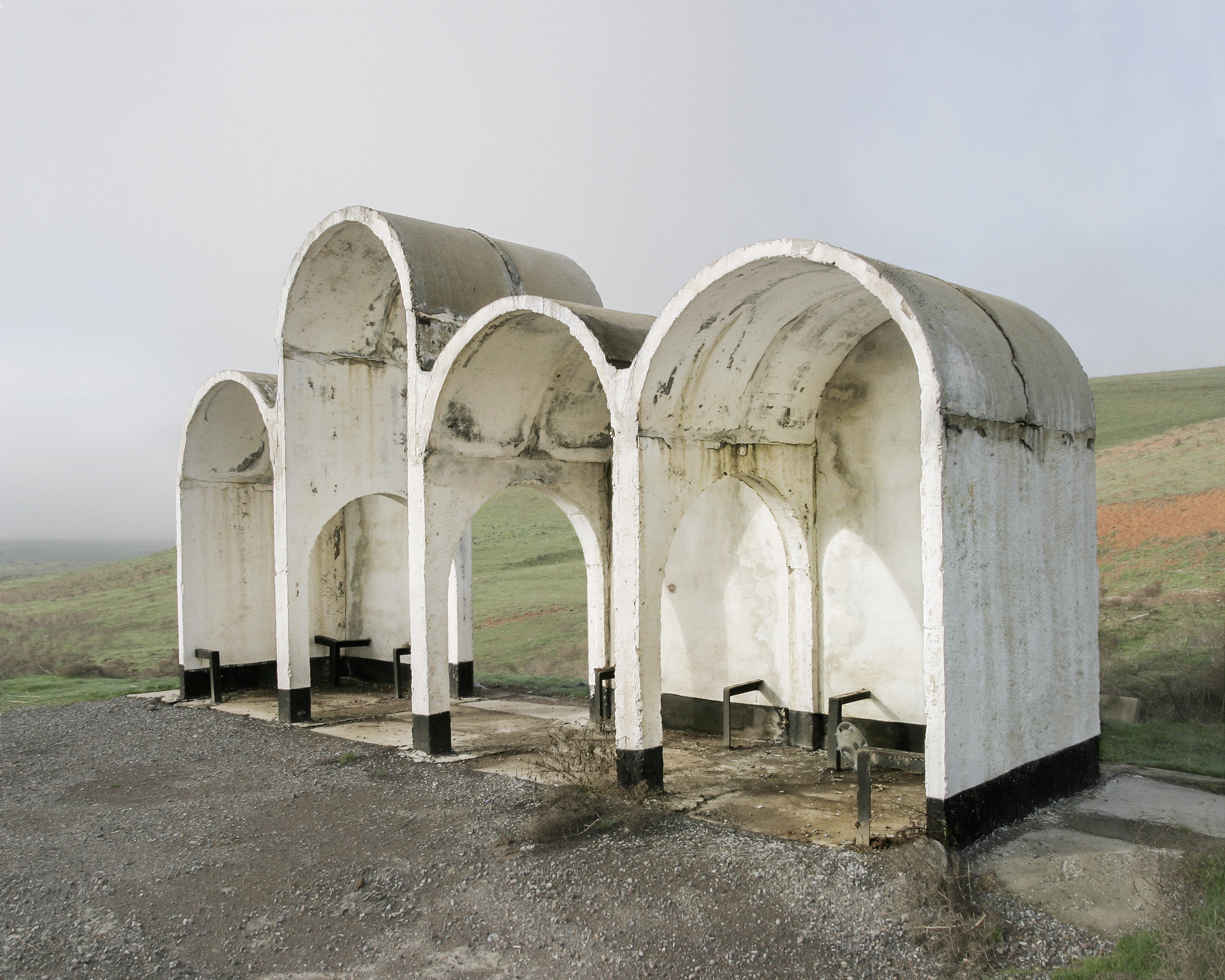
Shymkent, Kazakhstan. By Christopher Herwig
Do you feel like this project is perhaps representative of a larger trend in photography, of photographing scenes of decaying industrial landmarks? What are your impressions of this trend?
I mean, I’m sure it is part of a larger trend. I don’t think I can deny that, but I think that’s fine. I think it’s quite cool that people are looking for beauty in places that one might not normally look for it and it doesn’t necessarily have to be depressing or sad. If that’s what you get out of it, that’s fine as well, I think photography and art can encompass a variety of different things. I think that to be able to focus on smaller architectural achievements that we normally would have maybe ignored, that’s cool.
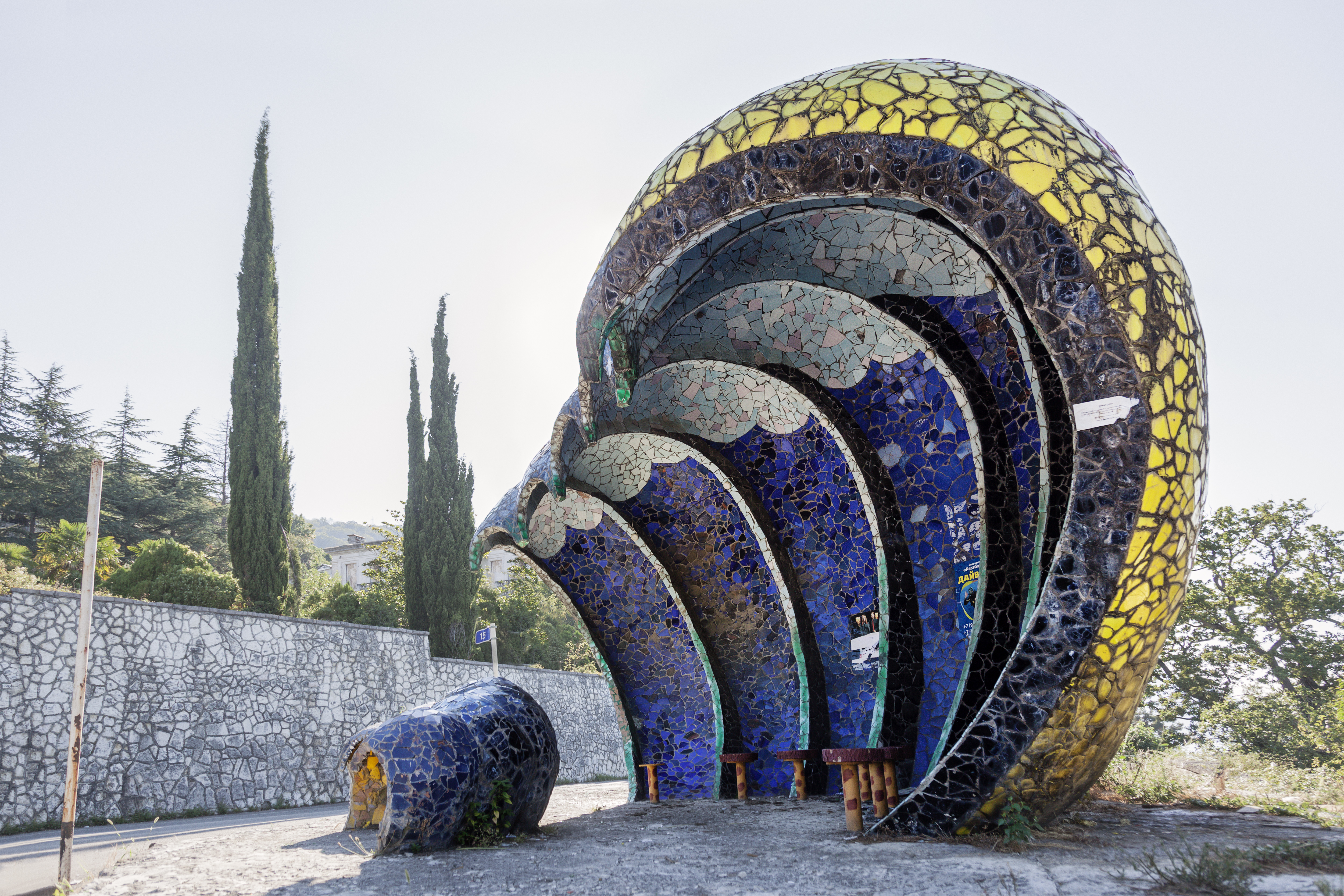
Gagra, Abkhazia. By Christopher Herwig
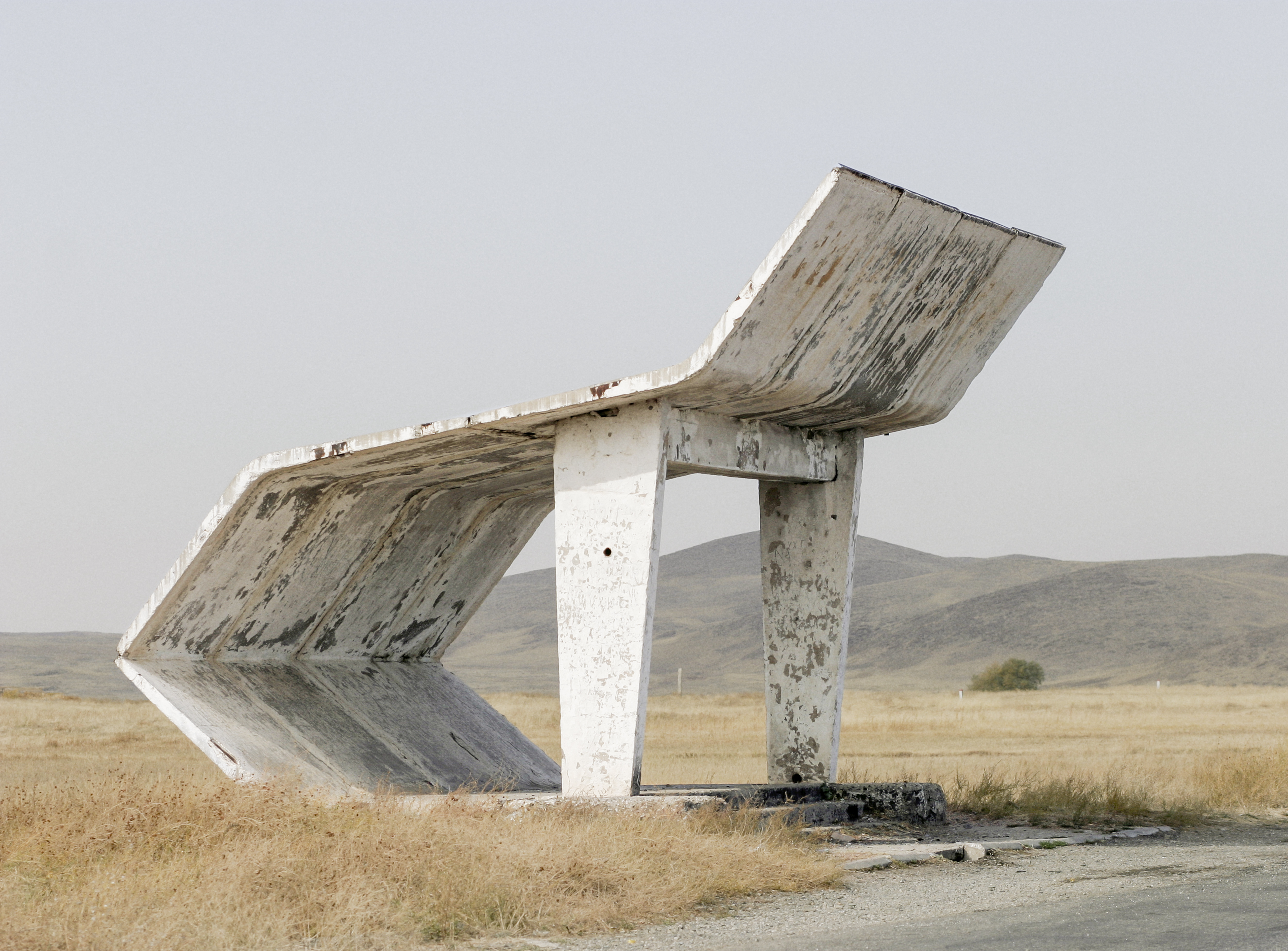
Taraz, Kazakhstan. By Christopher Herwig
The Soviet bus stops in Herwig’s project come in a wide range of conditions, some newly painted, some derelict, but all remnants of a former industrialized past. The project illustrates when this kind of photography has the potential to highlight an alternate narrative to what we’re typically exposed to, one which, in this case, transgresses the fine line between Soviet art and politics. Do you have an example of industrial decay near you that is part of a larger story? Share it on the PicsArt photo editor with the hashtag #IndustrialDecay and be sure to put its story in writing, so we can feature it later on. Or, if you have snapped any of Herwig’s Soviet bus stops for yourself, post those pictures on the app, too, with the hashtag #SovietBusStops and let’s get a conversation going!


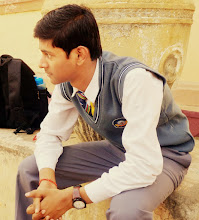
No comments:
Post a Comment